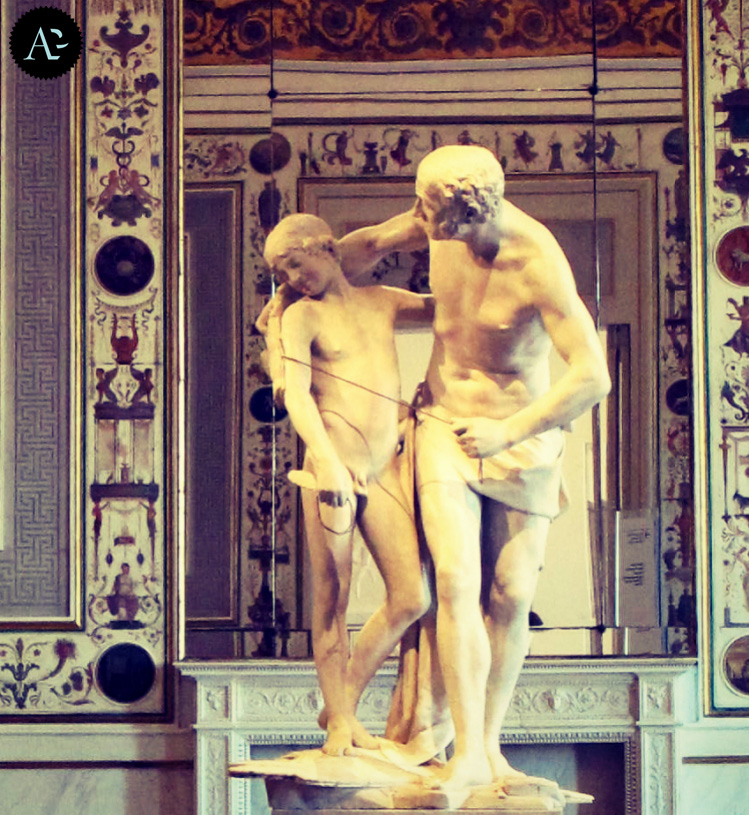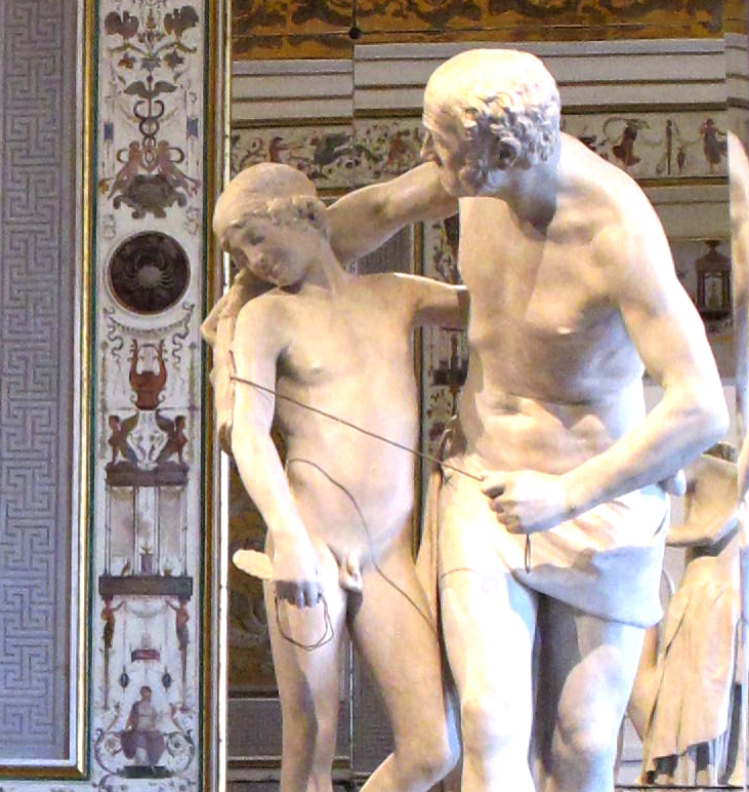
Daedalus and Icarus by Antonio Canova
A post about the new Canova rooms of the Correr Museum in Venice.
In this post I will tell you the story of one of Antonio Canova’s masterpieces that you can admire in this room.
In the centre of the vedute room of the Museo Correr in Venice is the marble group Daedalus and Icarus (1777-1779), an early masterpiece by Antonio Canova.
Daedalus and Icarus. History of a masterpiece
The work was commissioned by the procurator Pietro Vettor Pisani for Palazzo Pisani Moretta on the Grand Canal.
The artist was very young when he created this masterpiece and it represents a turning point in his career because, with the payment agreed upon with the wealthy patron, Canova was able to move from Venice to Rome to complete his training, observing classical works live.
Canova succeeded in creating a sculpture that synthesises the Venetian painting style of the 18th century in a classical canon such as the myth of Icarus.
The whole composition is bound around a central void and closed by the thread stretched between Icarus’ wing and Daedalus’ hand.
The worried face of the father, who is trying to make sure that the wings are firmly in place on his son’s arms, is astonishing.
The story goes that Daedalus and Icarus, son and father, wanted to escape from the labyrinth and the terrible Minotaur by literally flying away.
So they devised a way to make wings out of feathers held together by wax. It will be this fragile element that will cause a tragic outcome to the young man’s flight.
As he approached the sun, the wax melted and Icarus fell.
This sculpture is one of Canova’s most beautiful works.
Although the sculpture was intended for a private client, it was presented at the 1777 ‘Fiera della Sensa’ (Ascension) in Venice and all the Venetians were enthusiastic and amazed by the beauty and delicacy of the sculpture.
In fact, knowing that Canova was so young when he created this work makes me think that he felt a bit like Icarus. For he too knew that the success of the sculpture would earn him the money he needed to set off and launch a memorable career.

.

